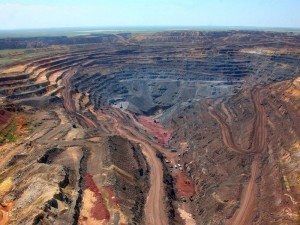A hybrid hydrogen-carbon (H2CAR) process for the production of liquid hydrocarbon fuels must be proposed in which biomass is the carbon source and hydrogen is supplied from carbon-free energy.
To implement this concept, a process has been designed to co-feed a biomass gasifier with H2 and CO2 recycled from the H2-CO to liquid conversion reactor. Modeling of this biomass to liquids process has identified several major advantages of the H2CAR process.

(i) The land area needed to grow the biomass is <40% of that needed by other routes that solely use biomass to support the entire transportation sector. (ii) Whereas the literature estimates known processes to be able to produce ≈30% of the United States transportation fuel from the annual biomass of 1.366 billion tons, the H2CAR process shows the potential to supply the entire United States transportation sector from that quantity of biomass. (iii) The synthesized liquid provides H2 storage in an open loop system. (iv) Reduction to practice of the H2CAR route has the potential to provide the transportation sector for the foreseeable future, using the existing infrastructure. The rationale of using H2 in the H2CAR process is explained by the significantly higher annualized average solar energy conversion efficiency for hydrogen generation versus that for biomass growth. For coal to liquids, the advantage of H2CAR is that there is no additional CO2 release to the atmosphere due to the replacement of petroleum with coal, thus eliminating the need to sequester CO2.
The transportation sector relies almost exclusively on liquid hydrocarbons as the energy source. One reason cars, trucks, buses, trains, airplanes, etc. prefer to use liquid hydrocarbons is their high volumetric energy density and convenience of use.
However, combustion of liquid hydrocarbon fuels leads to emission of massive quantities of CO2 with the associated greenhouse effect. In the United States alone, oil consumption in the transportation sector approaches 13.8 million barrels per day (Mbbl/d) (1), corresponding to a release of 0.53 gigatons of carbon per year (GtC/yr) (2). The current global release of carbon from all of the fossil fuel usage is estimated to be at 7 GtC/yr, and the business-as-usual scenario is expected to raise it to ≈14 GtC/yr by 2050 (3–5). The concern over increased carbon release has led to the consideration for the use of alternative carbon-free energy carriers by the transportation sector.
Some of the alternative energy carriers considered for transportation are electricity and hydrogen (6, 7). Both of these energy carriers, when produced from a carbon-free primary energy source such as nuclear, solar, wind, etc. or a renewable source such as biomass, have a potential to eliminate net carbon emission by the transportation sector. However, use of either of these carriers is laden with technical and economical challenges. For the transportation sector, probably the biggest challenge is the storage density of the energy (6). The current energy density of commercial batteries is <175 Wh/kg of battery (8). At a storage pressure of 680 atm (1 atm = 101.3 kPa), the lower heating value (LHV) of H2 is ≈1.32 kWh/liter. In contrast, the corresponding energy density for gasoline is 8.88 kWh/liter. For a given on-board storage space, the lower storage energy densities of batteries and H2 severely limit the driving distance (9). Furthermore, energy and cost associated with the delivery of a low-energy density carrier to an automobile is a large fraction of the overall energy and cost (6). Therefore, the convenience of the use of a liquid hydrocarbon fuel through the existing infrastructure is a big deterrent to replacement by batteries or H2.
Other historical reasons for the use of liquid hydrocarbon fuels have been easy access to primary resources and relatively low cost. However, the recent rise in the petroleum price has refocused the world’s attention to the finiteness of this source of energy. By varying accounts, conventional oil production is predicted to peak in as little as the next 10 years to as high as 50 years (10, 11). A large number of developed, as well as developing, nations import oil for the transportation sector to support their economic activities. The looming possibility of the decline in the availability of oil is forcing the nations to consider alternate energy sources such as biomass and coal to supply liquid hydrocarbons for transportation. The use of each of these energy sources brings additional challenges.
The nations rich in coal reserves are actively exploring the option of converting coal to liquid fuels. However, the thermal efficiency of an actual Fischer–Tropsch (FT) process to convert coal to synthetic hydrocarbon liquids is <50% (12). Per unit of transportation energy consumed, the use of coal leads to added carbon release to the atmosphere. For example, about 3 kg of carbon per gallon of gasoline used is released, whereas 6–7 kg of total carbon is estimated to be released with the use of a gallon of synthetic liquid fuel derived from coal. This increase in carbon release has led to intense research for the so-called clean-coal technologies whereby carbon dioxide from the coal-to-liquid conversion process will be captured and then sequestered (13, 14).
Service points to the potential dangers associated with the sequestration of CO2 in depleted oil/gas reservoirs, unmineable coal beds, and deep saline aquifers (15). If CO2 leaks out, it can lead to leaching of dangerous trace elements in freshwater aquifers due to lowering of the pH and can impact soil chemistry. Clearly, massive quantities of CO2 would be sequestered during a century’s-long production of liquid fuels from coal. This would place extreme demands on CO2 capture, storage, and monitoring systems. An alternative route whereby liquid fuels from coal can be produced without any CO2 sequestration, as well as with no additional CO2 emission (as compared with petroleum use), would be highly desirable.
Biomass is another energy source that has increasingly drawn attention as a source of liquid hydrocarbon fuels (16, 17). It can also be a solution to the problem of CO2 emission from the transportation sector because CO2 released from vehicle exhaust is captured during biomass growth from atmosphere. However, it has been estimated that the United States can fulfill only 12% of its total gasoline and 6% of its diesel demand by converting all corn and soybeans currently produced in the country to ethanol and biodiesel, respectively (18). Other options include gasification of biomass to obtain synthesis gas (syngas), a mixture of CO and H2, and its conversion to liquid fuels using the FT process. A quick estimate can be made for the land area required to support total current oil consumption of 13.8 Mbbl/d by the United States transportation sector. Using the “current case” biomass growth and gasification data provided in the recent National Research Council (NRC) report on H2 (6) and assuming that the conversion of syngas to diesel is 100% selective, one can estimate the optimistic land area requirement to be ≈5,296,000 km2. This required land area is 58% of the total United States land area. Just to put the numbers in perspective, the currently used cropland area in the United States is 1,792,000 km2 (6), which is roughly 20% of United States land area. It will be challenging, if not impossible, to supply the energy need of the total United States transportation sector by using bioenergy crops as a sole source of energy.






